By Eric Vandenbroeck
and co-workers
Three Critical Trends To Watch Out For
Last week when we
were looking for the most explosive trends in the world, we first came up with about
fourteen, which included issues like the deadly conflict in Ethiopia, the fight
against terrorism in the Sahel, and many other potential conflicts. But in the
end, I decided to focus on only three, which will include an actual historical
example that tells us about Russia in particular.
1. Russia is
banking on a cold winter, crumbling the resolve of Ukrainians and their allies
across Europe providing military support as Moscow cuts off energy supplies and
targets Ukraine’s entire energy infrastructure to keep the country as cold and
dark as possible. It could provide Russia a respite to regroup its forces
and prepare for spring offensives. It could drive some European countries
grappling with surging energy prices and economic woes to question their support
for Ukraine. But it could also steel Europe’s resolve, harden Ukraine’s
determination, and presage more effective Ukrainian offensives against Russia’s
beleaguered forces when the weather warms up. Most defense analysts we spoke to
agreed that the first few months of 2023 will be crucial to determining the
trajectory of the war in Ukraine and whether Putin’s massive military gambit
will ultimately fail.
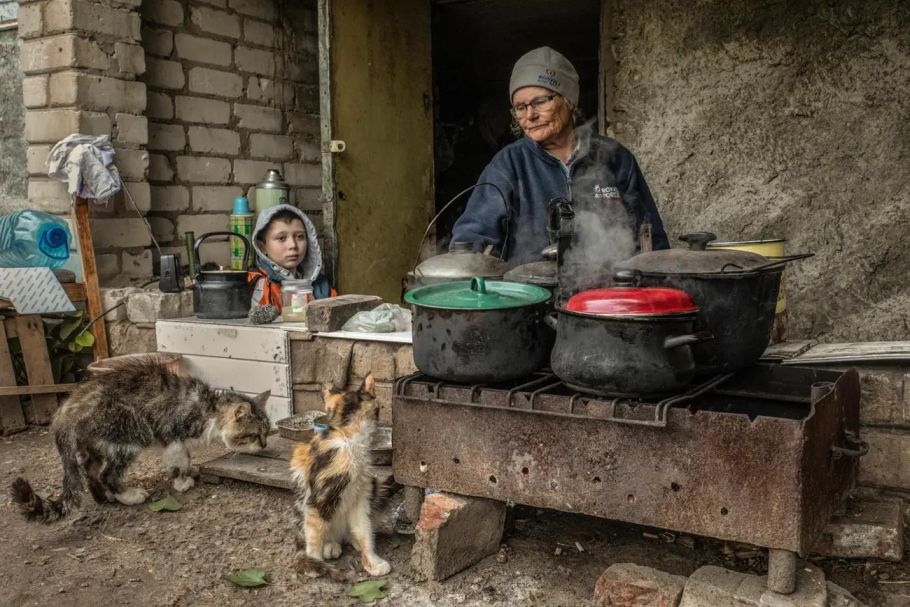
2. Russia
is running out of munitions to lob at Ukrainian civilian targets and has turned
to Iran for a steady supply of drones and other sophisticated munitions. The
head of Israel’s top spy organization, David Barnea of Mossad, warned that Iran is secretly planning to “widen and
broaden” its weapons shipments to Russia shortly. Of course, this isn’t an
example of a charitable Iran giving poor Russia some weapons for the holidays
out of the kindness of its own heart. In exchange, Iran could get unprecedented
levels of new military hardware and technical support from Russia, including
Sukhoi Su-35 fighter jets, air defense systems, and other advanced
military technology. U.S. officials warn that the new army bromance could
prolong Ukraine's war and threaten U.S. allies and partners in the Middle East.
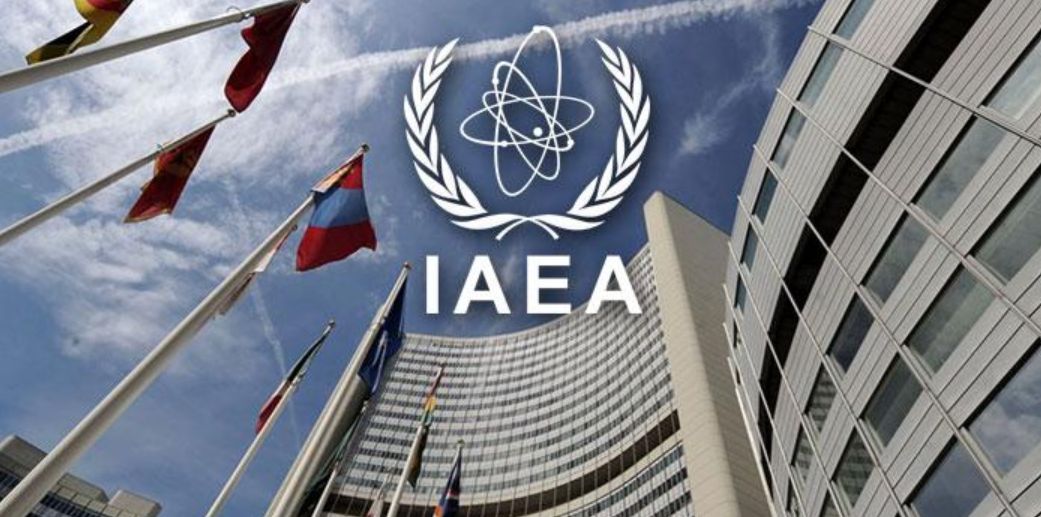
3. Nonproliferation
games. 2022 was filled with a lot of bad news in the world of nuclear
nonproliferation. 2023 has a similarly depressing forecast but one worth
tracking closely nonetheless. North Korea is preparing its seventh atomic
test, showcasing how it
can expand its nuclear program despite devastating international sanctions and
diplomacy dead in the water. Russia will likely continue rattling the
nuclear saber to erode Europe’s support for Ukraine, even though U.S. officials
deem any tactical atomic weapon use by Russia as highly unlikely. According to
U.N. watchdogs, efforts to revive the Iran nuclear deal have run aground, and
Tehran is already expanding its stockpile of highly enriched uranium.
Meanwhile, China is set to expand its nuclear weapons program, with plans to
increase its supply of 400 nuclear warheads to 1,500 by 2035.
Russian tanks near Ukraine’s eastern border, Rostov
region, Russia, January 2022:
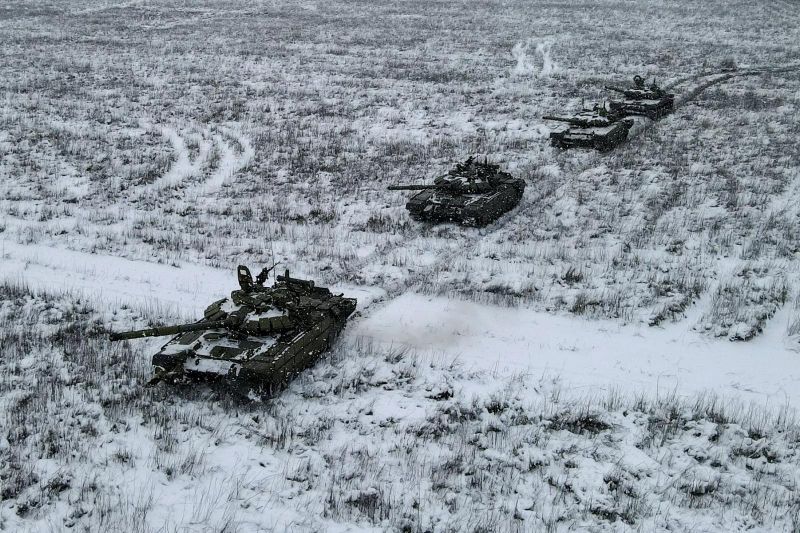
The Russian Cossack War
One of Russia’s most
significant military victories came with the coldest European winter in 500
years. At the beginning of the eighteenth century, Tsar Peter the Great
struggled to repel the formidable forces of Charles XII of Sweden, advancing on
Moscow. Then came the Great Frost of 1708–9. Birds were said to have frozen in
midflight and dropped dead to the ground. Charles’s army of more than 40,000
men soon lost half its strength from exposure and starvation. To escape the
cold, the Swedish king led the remnants of his army south into Ukraine to join
the Cossack leader, Hetman Ivan Mazepa, and his
forces. But the damage was done. The following summer, Peter’s Russian army
routed Charles’s weakened troops at the Battle of Poltava, ending Sweden’s
empire and its designs on Russia.
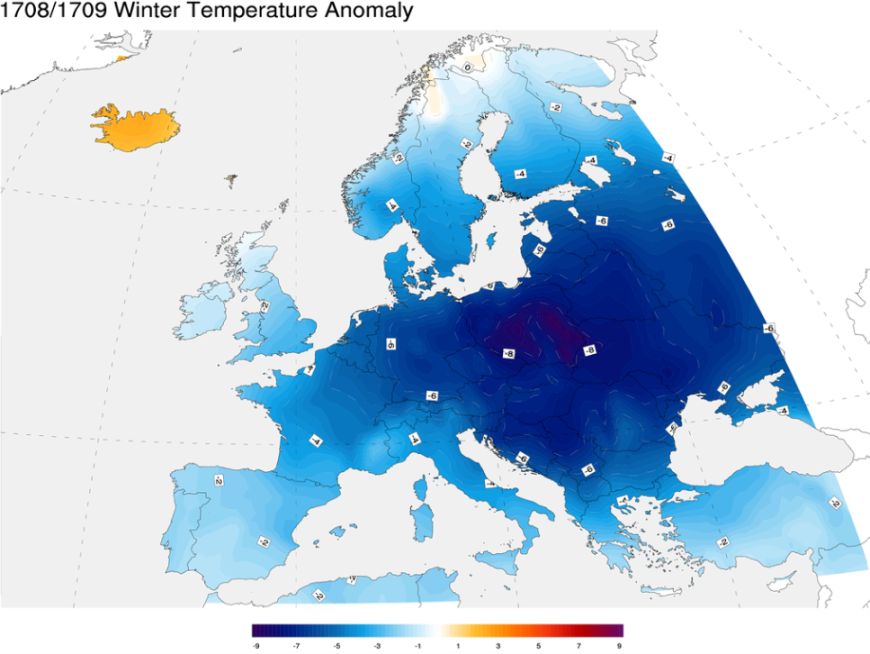
The Swedes were
neither the first nor the last European army to suffer the “General Winter”
ravages on Russia’s frontiers. Exacerbated by the vast expanse of the Eurasian
landmass, winter fighting there has often proved to be the downfall of great
armies. This phenomenon has often worked to Russia’s advantage for centuries,
as a succession of powerful militaries has succumbed to inadequate equipment,
short supply lines, and poor preparation. But as Russian
President Vladimir Putin’s war in Ukraine enters the harshest months
of the year, there are many indications that it may be Russia, rather than its
adversary, that suffers the worst consequences this time.
His Empire For A Horse
Europe’s best-known winter
defeat in Russia came in 1812—just over a century after the Battle of
Poltava—when Napoleon’s Grande Armée retreated from Moscow. Russia’s
scorched-earth tactics, which left the French with no food or shelter along the
withdrawal line, made the effect even more deadly. Yet the most significant
casualties had occurred earlier.
The Grande Armée had
been almost half a million strong when it crossed the River Neman, the frontier
between Prussia and Russia, in June 1812. But it soon lost a third of its strength
from the summer heat, disease, hunger, and exhaustion as the emperor forced his
men toward Moscow. Although the retreat into Russia’s expanse was initially
unintended, Tsar Alexander I’s commanders soon realized the advantage. They
kept withdrawing east and did not make a stand until General Mikhail Kutuzov
was ordered to halt Napoleon at Borodino, 75 miles west of Moscow. The battle
proved a costly victory for the French, even though it enabled them to enter
Moscow unopposed.
But it was the
approaching winter that proved fatal for the invaders. Napoleon wasted five
weeks in Moscow expecting the tsar to come to terms. When the Grande Armée
finally started withdrawing to central Europe on October 19, the soldiers wore
their summer uniforms. They had also lost their baggage trains and could expect
little food along the way. Their most significant deficiency was in the cavalry
to hold off marauding Cossacks. The shaggy Cossack ponies were accustomed to
the winter blizzards, which began a month later, while the last of the chargers
and draft horses from western Europe collapsed from the cold and lack of
forage. Starving soldiers hacked off their meat even before they were dead.
Desertion or surrender was far from a guarantee of survival. Avenging Cossacks waited
to skewer enemy soldiers on their long lances; Russian peasants slaughtered
them with scythes. By early December, Napoleon feared a coup d’état during his
absence and, abandoning his army, headed for Paris before his frozen men could
reach safety. By this point, his forces had suffered nearly 400,000 casualties,
and he had lost his reputation for invincibility on the battlefield.
Charles XII of Sweden and Hetman Ivan Mazepa
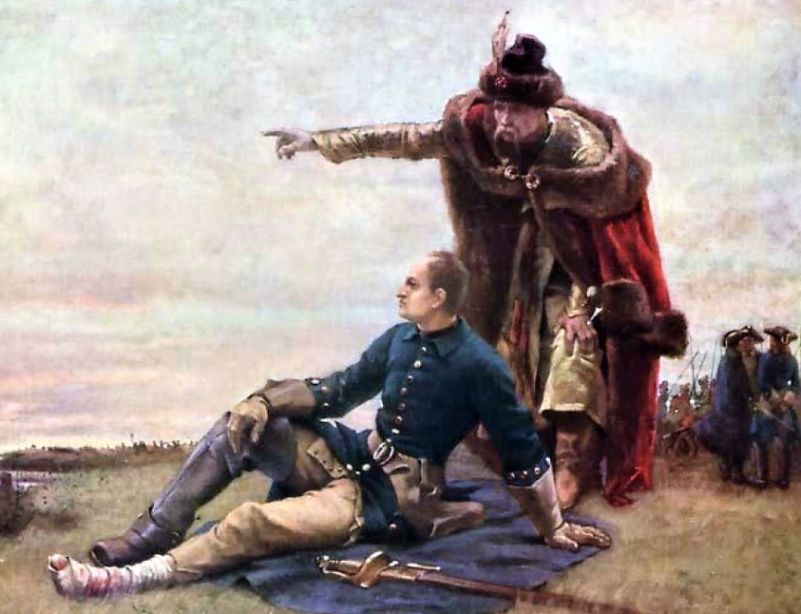
The way Russia won
was less well-known, although perhaps equally significant. Despite losing
200,000 of its men, Russia’s military leadership was far less concerned about
casualties than Napoleon. Russian officers still treated their peasant soldiers
as little better than serfs (and serfdom would not be abolished in Russia for
another 50 years). This lack of interest in soldiers’ well-being—and the casual
attitude to massive losses through so-called meat-grinder tactics—are apparent
in Putin’s army in Ukraine today.
Red Terror, White Frost
Another half-century
later, in World War I, the attitude of Russia’s military authorities had barely
changed. Their men were expendable. Trench life for the rank and file along the
eastern front that ran through Belorussia, Galicia, and Romania from 1915 to
1917 was an inhuman experience. And many resented that officers retired
each night to the warmth and relative comfort of peasant log huts behind the
front.
“Having dug
themselves into the ground,” the Russian writer and anti-tsarist Maxim Gorky
observed of the enlisted men, “they live in rain and snow, in filth, in cramped
conditions; they are being worn out by disease and eaten by vermin; they live
like beasts.” Many lacked boots and had to resort to shoes made from birch
bark. Stations for treating the wounded at the front were almost as primitive
as they had been in the Crimean War. This reality was in cruel contrast to the
photographs of the tsarina and her grand duchess daughters immaculately
dressed as nurses before the February 1917 revolution.
Winter conditions in the
Russian Civil War (1917–21) were even worse.
The most pitiful victims were the civilian refugees fleeing the Bolshevik
onslaught, or what became known as the Red Terror. During the winter of 1919,
the collapse of Admiral Kolchak’s White Russian armies in Siberia produced
terrible scenes along the jammed Trans-Siberian Railroad. Aristocrats,
middle-class families, and anti-Bolsheviks of all backgrounds were trying to
escape to Vladivostok in the Russian Far East to avoid capture by the Communist
Red Army, advancing from the Urals.
By mid-December of
that year, the Reds caught up with the tail of the line. They took the southern
Siberian city and industrial hub of Novo-Nikolaevsk
(present-day Novosibirsk), along with numerous trains still blocked there. The
city itself was in the grip of a typhus epidemic. All horses, carts, and sleds
available had already been taken, so the desperate set out on foot, not knowing
that farther ahead in Krasnoyarsk, cases had reached more than 30,000.
“A mass retreat is one
of the saddest and most despairing sights in the world,” Captain Brian Horrocks, a British officer in the Allied intervention in
Russia, wrote. “The sick just fell and died in the snow.” He was
horrified by the squalid condition even of those refugees who had managed to
find a place in packed cattle wagons. Most wagons lacked heating as
temperatures dropped below minus 30 degrees Celsius. “The thing which impressed
me most was the fortitude with which the women, many of them reared in luxury,
were facing their hopeless future,” he wrote. “The menfolk were much more given
to self-pity.” Kolchak’s staff officers
were, by then, drinking themselves into oblivion.
As White Russian,
Czech, and Polish commanders argued bitterly over priority for their troop
trains, starving and frozen refugees were dying at an alarming rate. One
officer wrote that trains at some Siberian stations were unloading hundreds of
bodies of people who had died from cold and disease. “These bodies were stacked
up at the stations like so much cordwood,” another officer wrote. “Those who
remained alive never talked, never thought of anything save how they might
escape death and get farther and farther away from the Bolsheviks.”
In the northern
Caucasus, known for its blazing summer heat, winter could sometimes produce
drops in temperature of more than 30 degrees Celsius in less than an
hour. In February 1920, General Dmitry Pavlov’s cavalry divisions were
caught in the open by a sudden blizzard. Pavlov “lost half of his horses which
froze in the steppe,” the Red Army high command noted. But the human losses
were far worse. “We left thousands of men frozen to death behind in the steppe,
and the blizzard buried them,” a Cossack officer recounted. Those who survived
did so by huddling against their horses. Pavlov, who had ignored warnings
of the possible change in the weather, suffered severe frostbite.
Stalin’s Icebreakers
By the twentieth
century, winter conditions on the Eurasian landmass posed a growing threat to
humans, horses, and military weaponry. Sometimes this worked to Russia’s
detriment. Despite its disproportionate strength and its massive expenditure of
ammunition, the Soviet army failed to break Finnish resistance in the Winter
War of 1939–40, following Stalin’s invasion of Finland. The Finns, proving
themselves even better practitioners of winter tactics than their invaders,
terrorized Red Army soldiers daily and night as their white-camouflaged ski
troops launched surprise attacks from forests, then disappeared like ghosts.
Their bravery and skill persuaded Stalin to accept Finland’s independence. But
it also served as a lesson for the war to come.
During the rapid
military mechanization between the two world wars, the Soviet Union created the
largest tank force in the world. The Red Army at least learned that guns and
engines needed special lubricants in extreme conditions. Such measures proved
key in Stalin’s ability to block Hitler’s armies in front of Moscow in December
1941. Both the German army and the Luftwaffe were unprepared. They had to light
fires under their vehicles and aircraft engines to defrost them.
German soldiers
referred bitterly to winter conditions as “weather for Russians.” They
envied the Red Army’s winter uniforms, with white camouflage suits and
padded cotton jackets, which were far more effective than German greatcoats.
Russian military historians have attributed the comparatively low rate of
frostbite and trench foot among Soviet forces to their old military practice of
using layered linen foot bandages instead of socks. German soldiers also
suffered more rapidly because their jackboots had steel studs that drained any
warmth. In February 1943, when the remnants of Field Marshal Paulus’s Sixth
Army finally surrendered at Stalingrad—the psychological turning point of World
War II—more than 90,000 German prisoners limped out of the city on
frost-ravaged feet. Yet their suffering had been caused less by cold than by
Hitler’s orders to hold on there and German panzers' inability to counterattack
in the snow with their narrow tracks.
General Winter also
played a significant role in the Red Army’s final victory in 1945. The
tremendous Soviet breakthrough in January, a charge from the River Vistula to
the River Oder, depended on the weather. Russian forecasters had predicted, “a
strange winter,” with “heavy rain and wet snow” after the hard frosts of
January. An order went out to repair boots. Stalin and the Red Army’s supreme
command set January 12 as the start date for the offensive, so the Soviets’
tank armies could take advantage of the deep-frozen ground before any thaw set
in. Characteristically, Stalin falsely claimed that he had advanced the date
from January 20 to take pressure off the Americans in the Ardennes. (U.S. forces
had already halted the German offensive there just after Christmas.) There was
another motive: Stalin wanted to control the bulk of Polish territory before
meeting U.S. President Franklin Roosevelt and British Prime Minister Winston
Churchill at Yalta in February.
Stalin’s commanders
did not let him down. “Our tanks move faster than the trains to Berlin,”
boasted the ebullient Colonel Iosif Gusakovsky. He had not bothered to wait for bridging
equipment to reach the frontlines before attempting to cross the River Pilica. He ordered his leading tanks to smash the ice with
gunfire and drive straight across the riverbed. The tanks, acting like
icebreakers, pushed the ice aside “with a terrible thundering noise,” a
terrifying experience for the poor drivers. The German eastern front in Poland
collapsed under the armored onslaught again because the Soviet T-34’s broad
tracks could cope with the ice and snow far better than any German panzer.
After 1945, the Red
Army’s achievements in winter warfare gave it a fearsome reputation in the
West. It was not until the Soviet Union’s ill-planned invasion of
Czechoslovakia in the summer of 1968—the Warsaw Pact forces lacked maps, food
supplies, and fuel—that Western analysts began to suspect they might have
overestimated the Soviets’ warfighting abilities.
Finally, in the
1980s, the collapse of the Soviet empire was marked by its doomed struggle to
control Afghanistan, a terrain that made winter warfare impossible for
conventional armies. Then, during the economic collapse in the 1990s, Russian
President Boris Yeltsin’s government often proved unable to pay officers and
soldiers alike, and corruption became institutionalized. Conscripts were
frequently on the edge of starvation because their rations were sold off;
theft, bullying, and ill-discipline became rampant. Spare parts from vehicles
and anything from fuel to light bulbs, boots, and especially any cold weather
kit disappeared onto the black market.
Corruption became
even worse following Russia’s chaotic invasion of Georgia in 2008. Putin began
throwing money at the armed forces. The waste on prestige projects encouraged
contractors and generals alike to pad their bank accounts. Little appears to
have been done to reassess military doctrine. The Russian idea of urban warfare
had still not evolved from World War II, with their artillery, the “god of
war,” smashing everything to rubble. This approach would continue during
Russian intervention in the Syrian civil war in 2015.
Yet Putin’s greatest
triumph in Russian eyes was the covert seizure of Crimea the year
before by infiltrating it with un-uniformed “little green men” from special
forces. This was part of Putin’s angry reaction to
the Maidan revolution in Kyiv, which forced his ally, President Viktor
Yanukovych, to flee and led to the start of
fighting in the Donbas region of Russian-speaking eastern Ukraine.
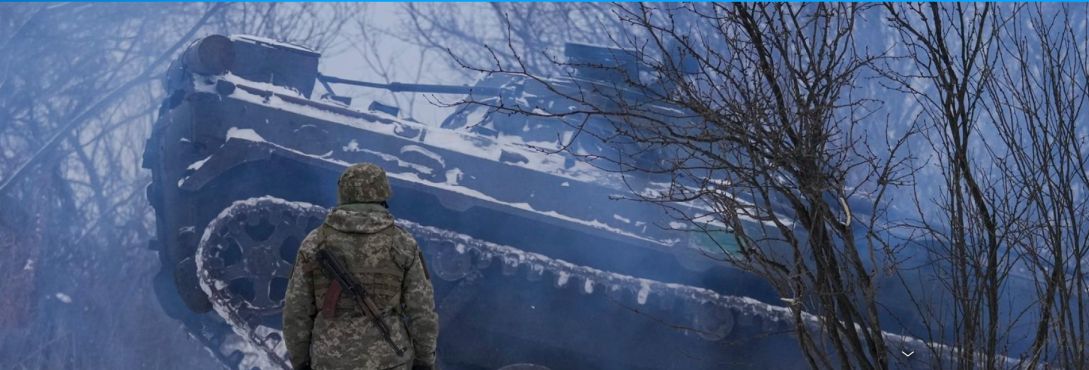
Putin In Denial
In February 2022,
eight years later, Putin launched his “special military
operation” in Ukraine. At the time, the vanguard was told to bring
their parade uniforms ready to celebrate victory—one of the most outstanding
examples of military hubris in history. Yet seven disastrous months later, when
the Kremlin was finally forced to order a “partial mobilization” of the Russian
population, it had to warn those called up that uniforms and equipment were in
short supply. They would have to provide their body armor and even ask their
mothers and girlfriends for sanitary pads instead of field dressings. The lack
of bandages is astonishing, especially as winter intensifies, since they are
vital to keeping frost from entering open wounds. Adding to the dangers are
mortar rounds hitting the frozen ground: unlike soft mud, which absorbs most of
the blast, frozen ground sometimes causes fragments to ricochet in brutal ways.
Putin’s new commander
in chief in the south, General Sergei Surovikin,
is determined to clamp down on attempts by some conscripts to avoid combat.
Many have been resorting to the sabotage of fuel, weapons, and vehicles, to say
nothing of self-inflicted wounds and desertion. Yet the Russian army’s
long-standing structural problem—its shortage of
experienced noncommissioned officers—has also led to a terrible record of
maintaining weapons, equipment, and vehicles. With sensitive technology such as
drones, these
problems will become especially costly in winter.
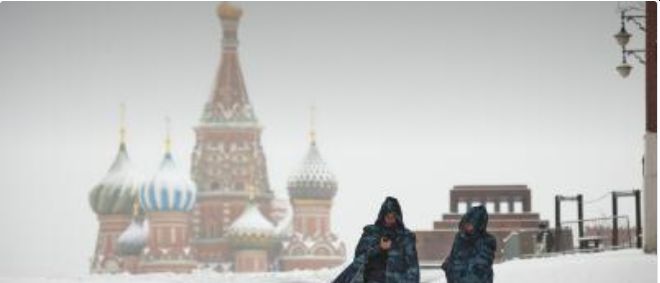
As both sides enter a
far more challenging season of fighting, the outcome will largely depend on
morale and determination. While Russian troops curse their shortages and lack
of hot food, Ukrainian troops now benefit from insulated camouflage suits,
tents with stoves, and sleeping bags provided by Canada and the Nordic nations.
Putin seems to be in denial about the state of his army and the way that
General Winter will favor his opponents. He may also have made another mistake
by concentrating his missiles against Ukraine’s energy network and vulnerable
civilian population. They will endure the most significant suffering, but there
is little chance they will break.
For updates click hompage here